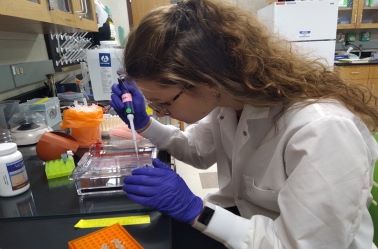

ISOLATION AND IDENTIFICATION OF TINEA PEDIS CAUSING DERMATHOPHYTES FROM COLLEGIATE RUNNERS.
Liga Astra Kalnina, St. John Fisher College
Tinea pedis, also known as athlete’s foot, is a very common superficial cutaneous fungal infection in humans caused by several dermatophytes, especially Trichophyton rubrum, Trichophyton mentagrophytes, and Epidermophyton floccosum. All forms of tinea pedis are pathogenic and are selective symbionts to the soles and toe webs of feet. Within the three forms of tinea pedis there is a varying degree of presentation on the host, from mild scaling and fissures, to vesicles and bullae, or being asymptomatic. Various risk factors contribute to the likelihood of one contracting tinea pedis, especially several factors unique to competitive runners. This includes the use of occlusive footwear, common locker rooms, and submission of feet to constant maceration, trauma, sweating, and having a depressed immune function. Research has shown that runners in particular are twice as susceptible when compared to the general population to have tinea pedis, and the infection is known to infect up to 70% of people worldwide at least once in their lifetime. Tinea pedis manifestation can become very resistant to treatment or even lead to secondary complications such as cellulitis and onychomycosis and severely impact the performance of runners and athletes alike. The dermatophytes found on collegiate runners were collected, isolated, and morphologically characterized as well as sequenced to confirm molecular identification.